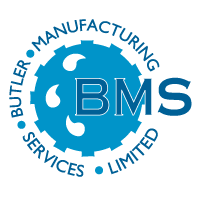Sewage Parameters 6 Part 1: Total Nitrogen
Introduction
In this installment of our blog, we’re discussing Total Nitrogen (TN)—often abbreviated as N—and how to reduce it in a sewage treatment plant. Reducing TN involves a two-stage process:
Nitrification: Conversion of Ammonia (NH₄) to Nitrates (NO₃).
Denitrification: Conversion of Nitrates (NO₃) to Nitrogen (N₂) and Oxygen (O₂) gases released into the atmosphere.
Why Reduce Total Nitrogen?
Excessive nitrogen levels in water can have serious environmental and health impacts:
Toxicity:
Nitrates (NO₃) can be toxic at levels above 45 mg/l.
Nitrites (NO₂), a less stable form of NO₃, are highly toxic to aquatic species.
Eutrophication:
Nitrogen contributes to eutrophication, a process where water becomes overly enriched with nutrients, leading to:
Aquatic plant blooms.
Transformation of water bodies into marshland, and eventually dry land.
Severe eutrophication can lead to the destruction of rivers and lakes.
Regulatory Standards:
New treatment plants often have effluent TN limits of ≤15 mg/l, and existing discharge licenses are being updated to include stricter limits.
Nitrogen in Nature
Nitrogen naturally cycles through different forms:
Protein: Found in plants and animals.
Ammonia (NH₄): Protein breaks down into ammonia.
Nitrates (NO₃): Ammonia is converted to nitrates through nitrification.
Nitrogen (N₂) and Oxygen (O₂) Gases: Nitrates are converted to gases via denitrification, which are released into the atmosphere.
Nitrogen Fixation: Gaseous nitrogen reenters the food chain through nitrogen-fixing bacteria, algae, or fertilisers.
Reducing Total Nitrogen in Wastewater
To reduce TN levels, wastewater must go through two key processes:
Nitrification:
Converts Ammonia (NH₄) to Nitrates (NO₃).
Requires aerobic conditions and sufficient oxygen.
Denitrification:
Converts Nitrates (NO₃) to Nitrogen (N₂) and Oxygen (O₂) gases.
Requires:
Anoxic conditions: Absence of oxygen.
A carbon source: Typically, incoming sewage or an external carbon source.
Adequate retention time for the reaction to occur.
Challenges of Denitrification
Denitrification is more complex to manage than nitrification because:
Precise Conditions: Requires tightly controlled anoxic environments.
Carbon Dependency: Relies on the availability of a carbon source to facilitate the conversion process.
Time Requirements: Needs sufficient contact time to ensure complete denitrification.
What’s Next?
In the next installment, we’ll explore the practical implementation of denitrification and provide examples of how to reduce Total Nitrogen levels in wastewater treatment systems.
Questions?
If you have specific queries or topics you’d like us to cover, feel free to contact us. We’re happy to help!
About BMS
BMS is a quality manufacturer of package products for wastewater and stormwater treatment:
Established: 1986
Global Reach: Exported to over 50 countries.
Family Business: A third-generation company with deep expertise.
BMS Product Range
BMS provides a wide array of surface water and wastewater treatment products, including:
View the full product catalogue here
Additional Services by BMS
Free Design Service: For sewage treatment, pump stations, and surface water management.
Operation and Maintenance: Full services for existing installations, including repair, advice, and testing.
Free CPD Presentations: Available for sewage treatment and surface water management, delivered at your location.
We would be delighted to discuss any requirements you might have, and we are available to meet you at your convenience. Contact us today.
© Butler Manufacturing Services 2024.

